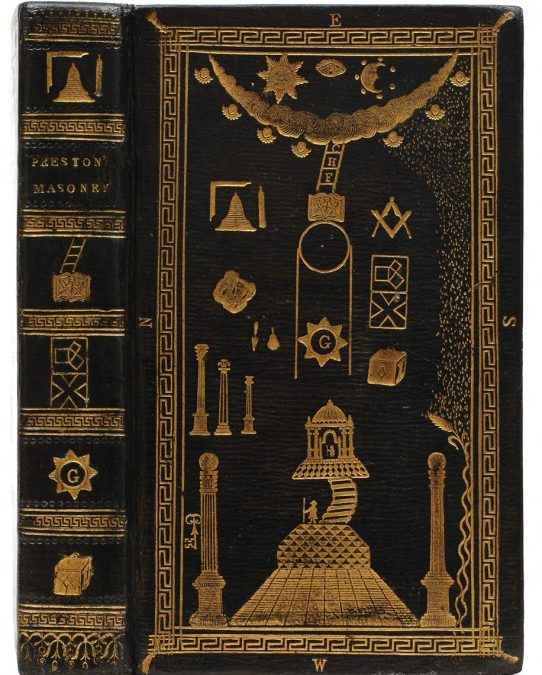
Illustrations of Masonry
What end can be more noble than the pursuit of virtue? what motive more alluring, than the practice of justice? or what instruction more beneficial, than an accurate elucidation of symbols which tend to improve and embellish the mind? Every thing that strikes the eye, more immediately engages the attention, and imprints on the memory serious and solemn truths. Masons have therefore universally adopted the plan of inculcating the tenets of their order by typical figures and allegorical emblems, to prevent their mysteries from descending within the familiar reach of inattentive and unprepared novices, from whom they might not receive due veneration. – Illustrations of Masonry by William Preston (12th edition, 1812).
A very attractive recent acquisition is this Masonic binding on a copy of the twelfth edition of Illustrations of Masonry by William Preston, a philosophical statement and handbook of the secret society. The binding was executed in 1812, most likely by John Lovejoy who was himself a Mason and one of seven English binders regularly producing this style during the late eighteenth and early-nineteenth centuries. He can be identified by the tools he used; a similar binding in red morocco can be seen on the Bodleian Library’s website, and one also appears in the Maggs Brothers catalogue Bookbinding in the British Isles (though it was not unusual for binders to share tools, so we can’t be absolutely sure that Lovejoy produced this binding).
Click to enlarge:
The design on the upper board matches an engraving used in the book, on which Lovejoy must have based his tools:
What’s nice about these bindings is their lack of sophistication. There’s a charming naivety about the tools, as they reflect the styles of a previous era that had by this time filtered down to the middle classes (who were, of course, the primary followers of masonry). I’m particularly fond of the cherub that appears on the lower board:
And these hands holding stonemasons’ tools:

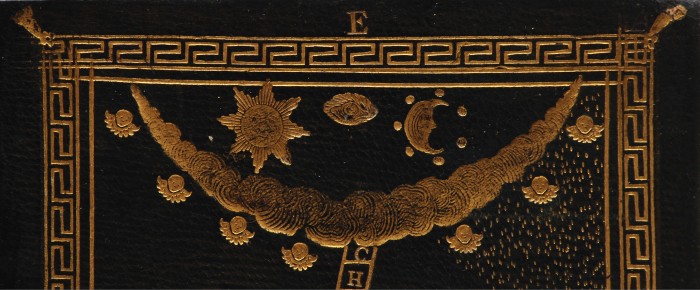
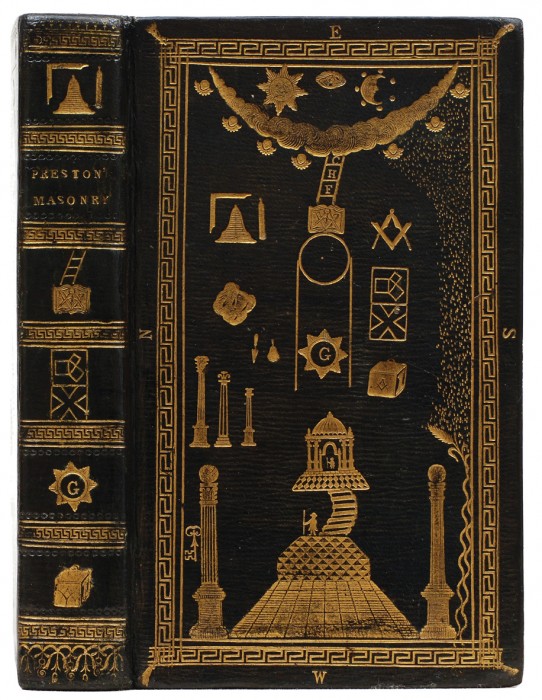
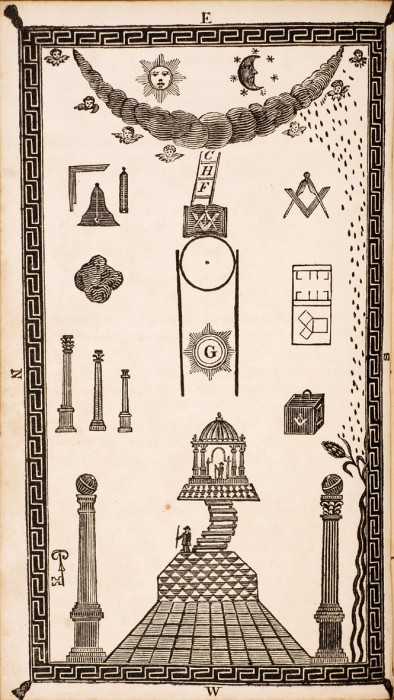
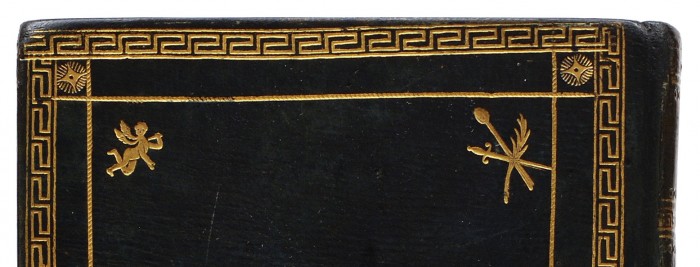
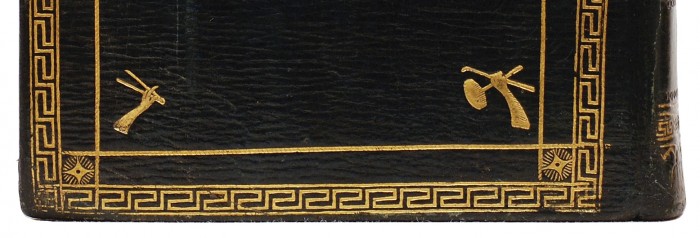
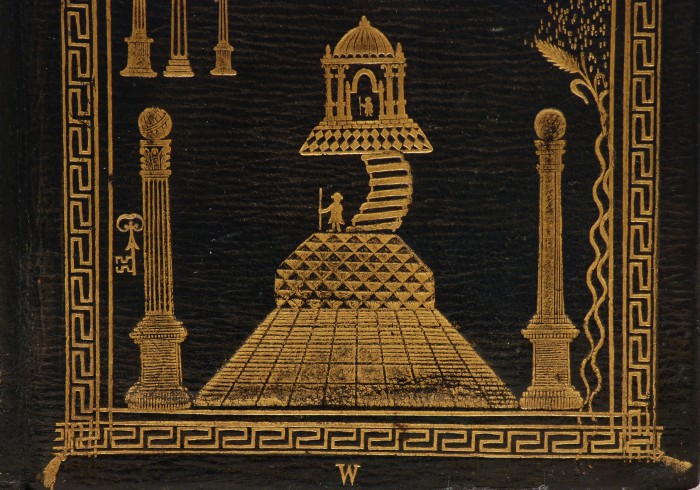

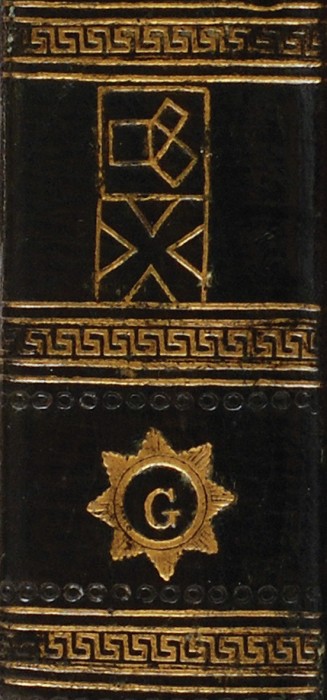
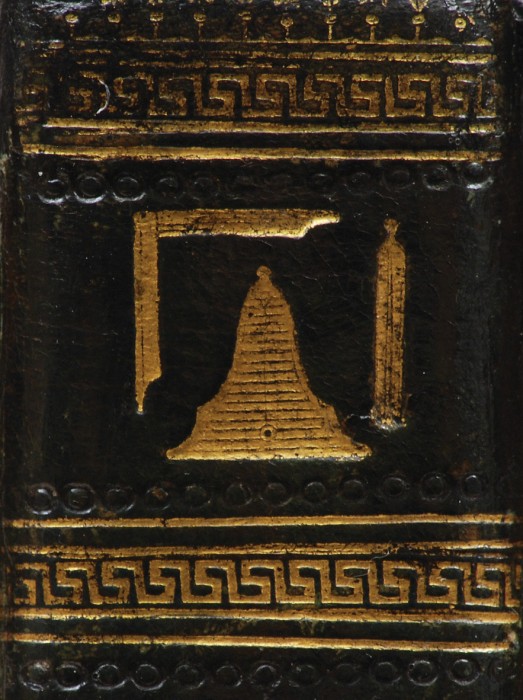
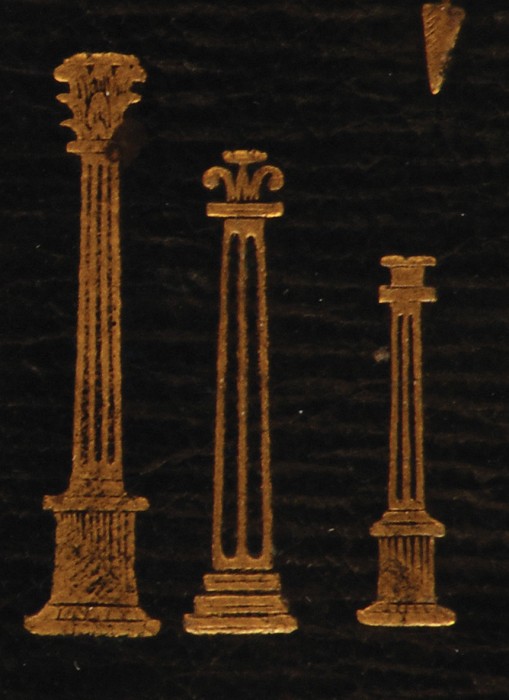
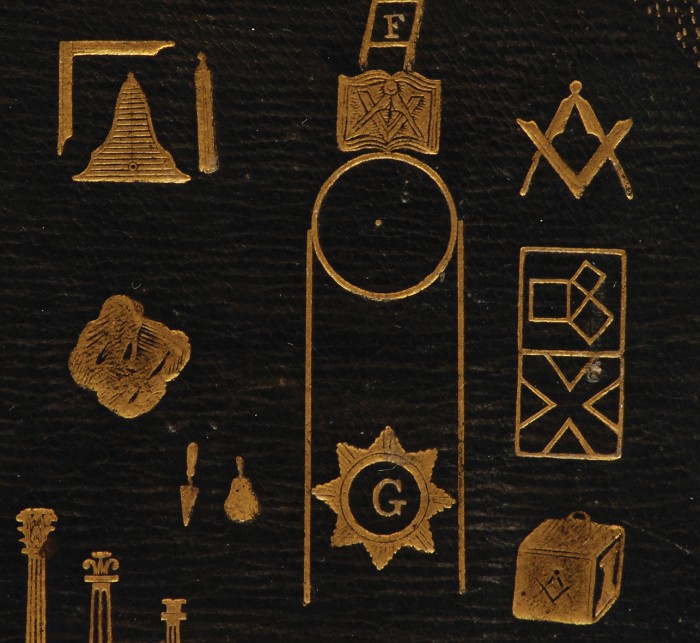
Recent Comments